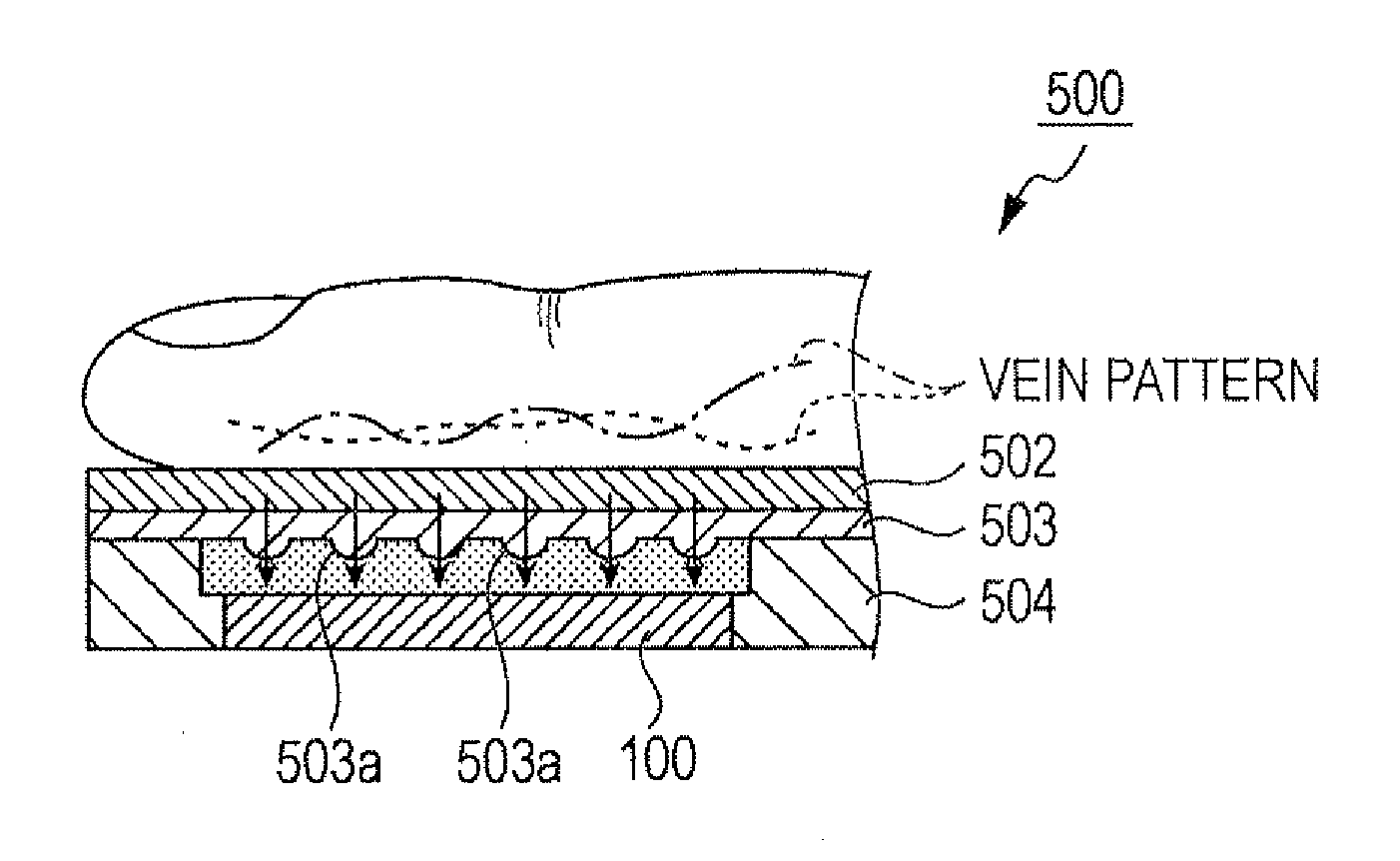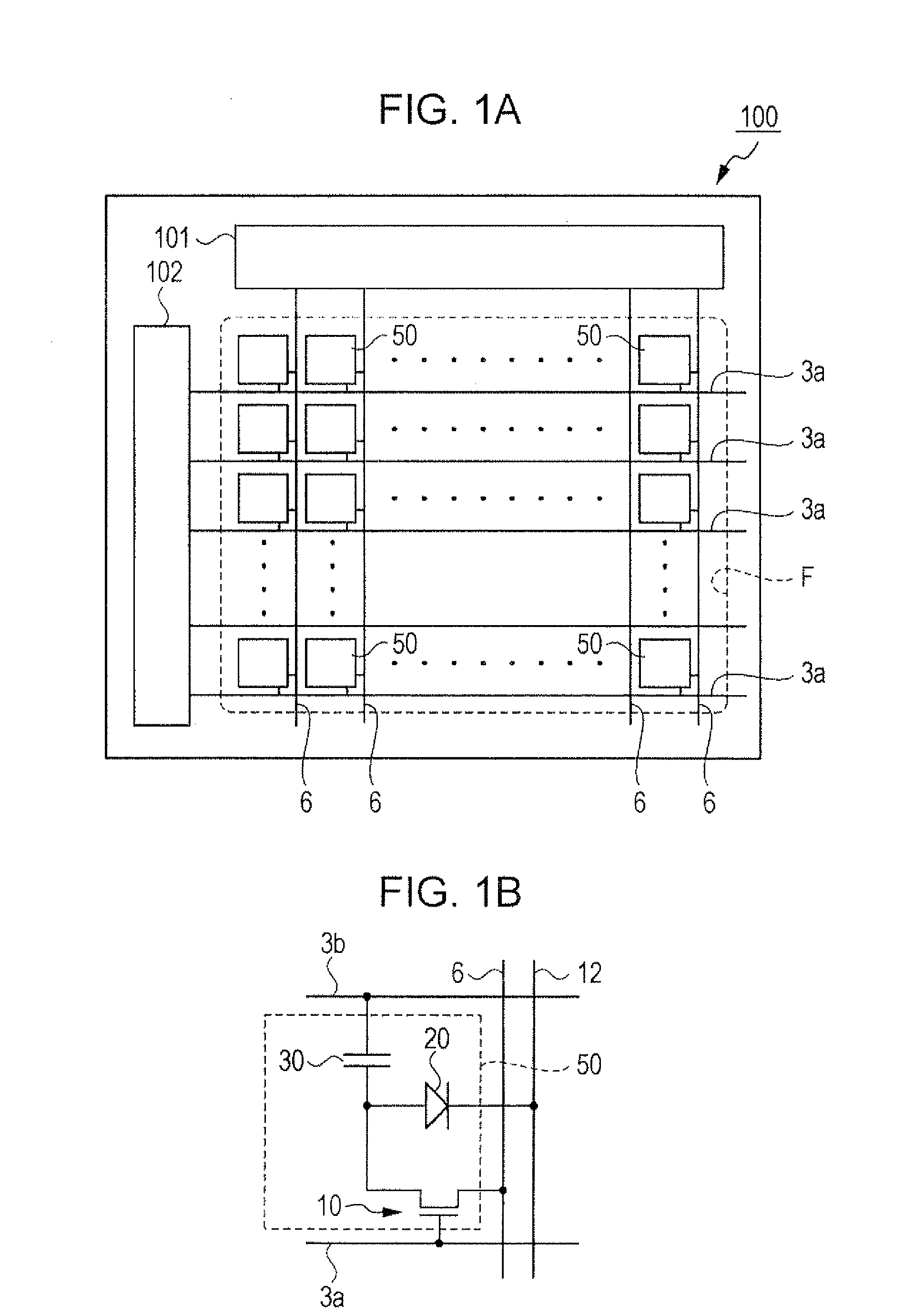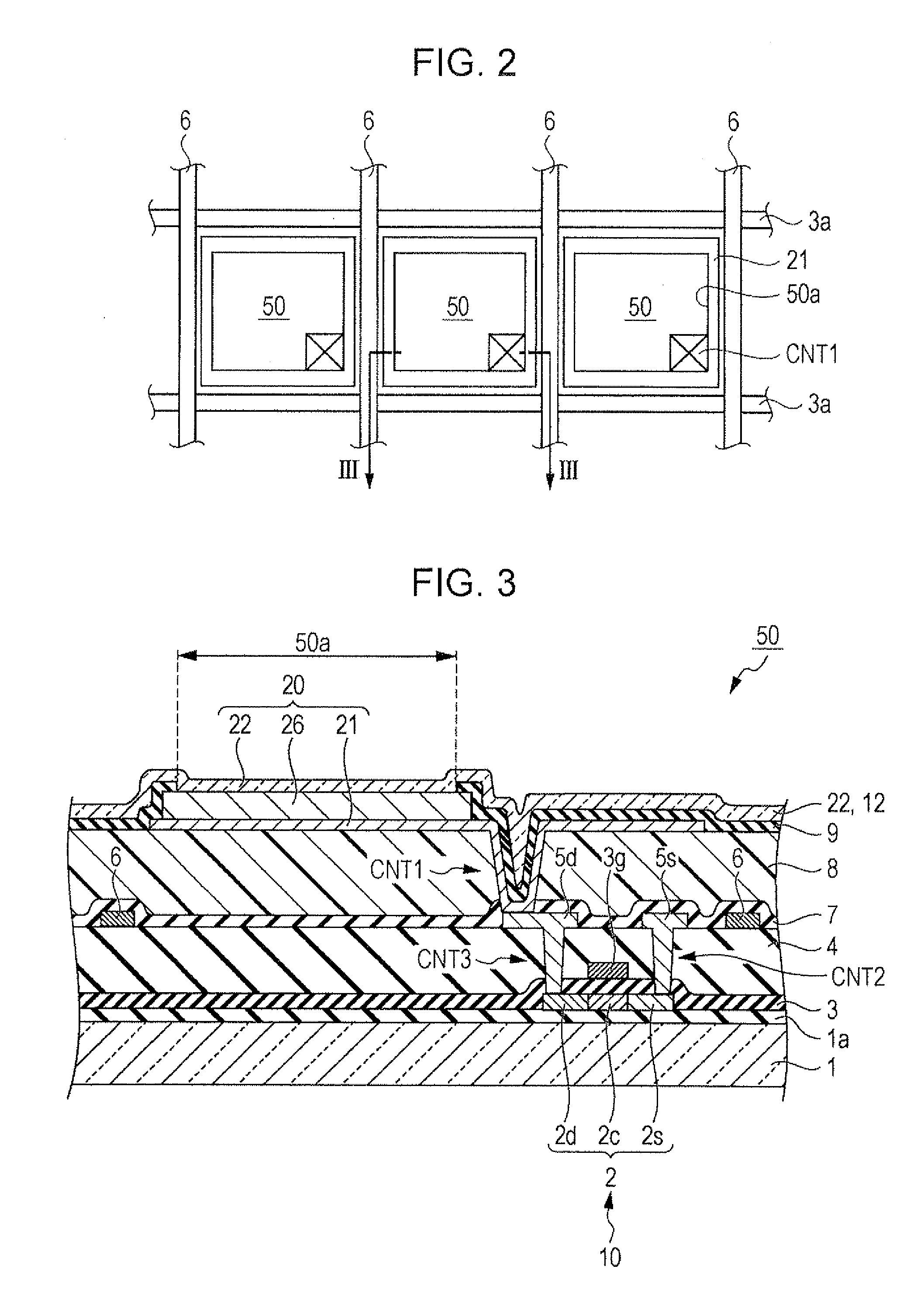Photoelectric conversion device and electronic apparatus
a conversion device and photoelectric technology, applied in the direction of photovoltaic energy generation, electrical equipment, semiconductor devices, etc., can solve the problems of difficult to reduce the leakage of current (dark current), cis thin films are liable to be damaged, and the leakage of current is difficult to reduce, so as to achieve stable photoelectric conversion and high electro-optic characteristics
- Summary
- Abstract
- Description
- Claims
- Application Information
AI Technical Summary
Benefits of technology
Problems solved by technology
Method used
Image
Examples
example
[0056]The first electrode 21 may be formed of a metal such as Mo (molybdenum), Nb (niobium), Ta (tantalum) or W (tungsten) by sputtering. In the Example, the first electrode 21 was formed on Mo to a thickness of about 400 nm.
[0057]The p-type compound semiconductor film acting as the light absorption layer 23 may be formed of a CIS (for example, CuInSe2 or CuInGaSe) thin film having a chalcopyrite structure. In the Example, the light absorption layer 23 was formed of CuInSe2 to a thickness of about 1.5 μ (1500 nm) by sputtering.
[0058]In the CIS thin film of the light absorption layer 23 having a composition Cu(Inx, Ga1-x)Se2 (0≦x≦1), the wavelength band of light that the light absorption layer 23 can absorb can be expanded up to about 1300 nm or the near-infrared region by altering the composition from Cu(InGa)Se2 to CuInSe2.
[0059]It is preferable that the amorphous oxide semiconductor layer 24 contain Group 12 and Group 13 elements, which are defined by International Union of Pure a...
modification 1
[0082]In the image sensor 100, the electrical configuration and connection of the photosensors 50 are not limited to those disclosed in the above embodiment. For example, the photodiode 20 may be electrically connected to the gate electrode 3g of the corresponding TFT 10 so that light received by the photosensor 20 can be detected as a change in voltage or current between the source electrode 5s and the drain electrode 5d.
modification 2
[0083]The shape in plan view of the light-receiving region 50a of the photosensor 50 is not limited to that disclosed in the above embodiment. For example, the light-receiving region 50a may be in a round or oval form, or in a polygonal form, such as triangular, rectangular or pentagonal form.
PUM
 Login to View More
Login to View More Abstract
Description
Claims
Application Information
 Login to View More
Login to View More - R&D
- Intellectual Property
- Life Sciences
- Materials
- Tech Scout
- Unparalleled Data Quality
- Higher Quality Content
- 60% Fewer Hallucinations
Browse by: Latest US Patents, China's latest patents, Technical Efficacy Thesaurus, Application Domain, Technology Topic, Popular Technical Reports.
© 2025 PatSnap. All rights reserved.Legal|Privacy policy|Modern Slavery Act Transparency Statement|Sitemap|About US| Contact US: help@patsnap.com



